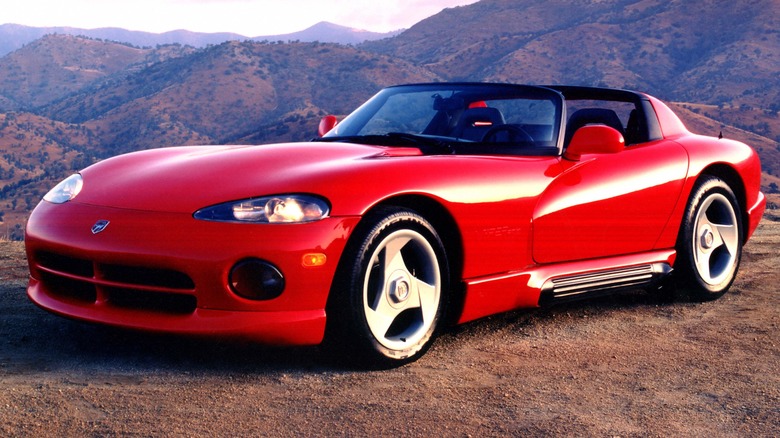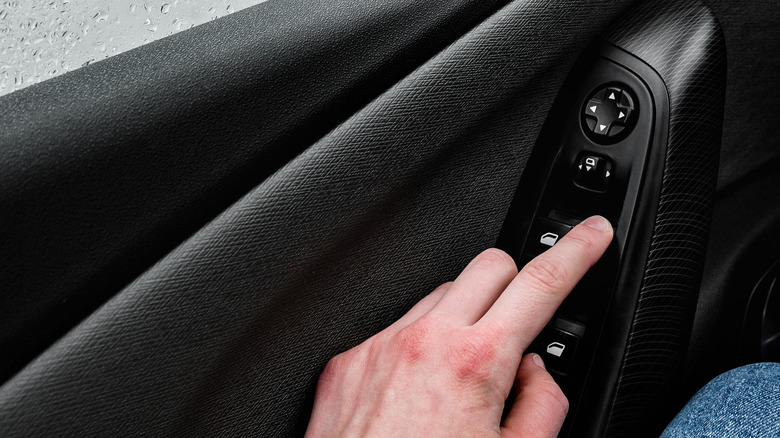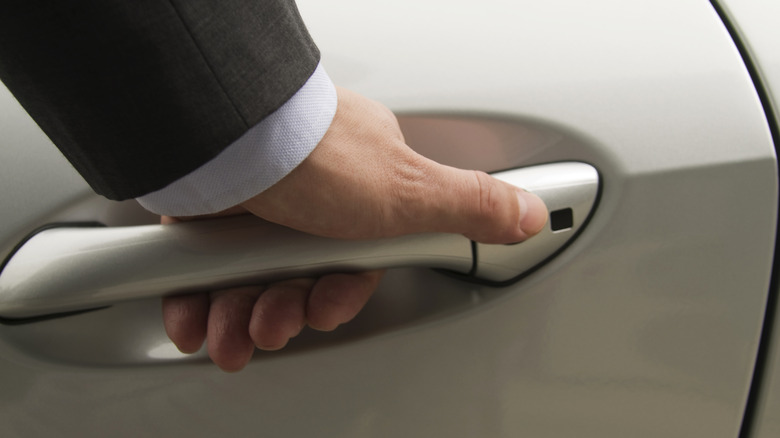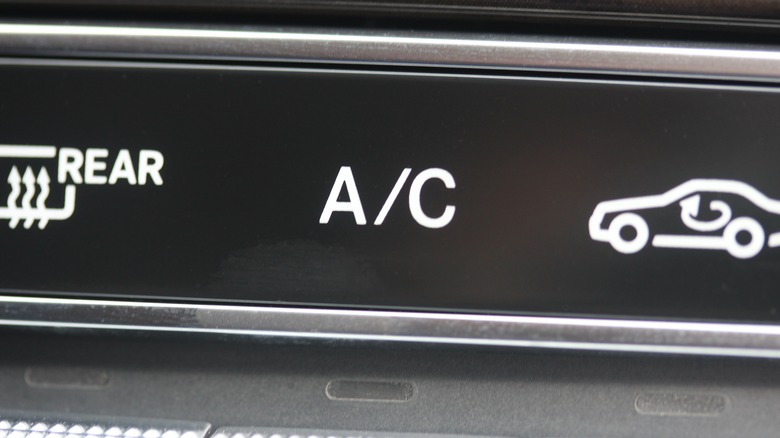5 Basic Features The Original Dodge Viper Didn't Have
When you think about the original Dodge Viper that came out in 1992, its speed, look and focus on a pure driving experience immediately spring to mind. In addition to its 400 hp, naturally aspirated, 8.0-liter V10, its manual transmission and rear-wheel drive configuration — Dodge's powerful roadster had a long hood and a low profile, giving it an aggressive and sporty appearance.
The vehicle famously didn't include any driver aids. We aren't talking about parking sensors here, but instead referring to things like traction control, which helps prevent the vehicle's wheels from losing grip by regulating the amount of power coming out of the engine. Traction control is standard on every car manufactured after 2012, but back in 1992 not everything had it — so it isn't too shocking of an omission. Even anti-lock brakes weren't present on many vehicles, and many classics today don't have this handy safety function.
So the idea of the 1992 Dodge Viper being a stripped-down vehicle for driving purists wasn't too outlandish until you look at some of the other missing features. When the original Viper hit the road, it was short of several "basic car components." Here are five of the most absurd omissions from the 1992 Dodge Viper.
It had no windows (sort of)
When it comes to basic features all vehicles usually (and really should) have, windows are fairly high on the list. They keep the car warm when the temperature drops, keep out debris and intruders and reduce drag by making it easier for air to flow around the car. Windows also tend to be "optional" in most cars, with the occupants having the ability to roll them down into the vehicle's door, or up out of the door, at will. This may involve using a crank handle on an older car, but vehicles from the last few decades have electric windows that can be deployed or retracted in seconds with the push of a button.
Not the 1992 Dodge Viper — It didn't have a crank, a button or any windows in the traditional sense. Windows add weight and complication — two things the Viper was built to avoid. Some plastic "windows" were included with the car but had to be clipped in while the vehicle was parked. They aren't exactly something you can wind up or down. The plastic windows also featured a zipper allowing you to reach through them when necessary, which is handy when considering another glaring omission on the original Viper.
The Viper had no exterior door handles
Door handles have appeared on cars and even horse-drawn carriages for as long as they've had doors. Not so with the 1992 Dodge Viper though. It had no outside door handles whatsoever. As with many decisions, this was likely to save weight and add to the car's appearance, and there may also have been a slightly more high-tech reason to release a car that likely confuses everyone who attempts to get into it. Ignoring the weight that the handle mechanism adds, Dodge may have been ahead of the curve when it comes to aerodynamics in opting to not include door handles. Many modern vehicles have handles that are completely flush with the bodywork until they're needed. Then fancier ones pop out, while others may take some prodding, but either way it only interrupts the car's profile when in use.
There is still a way to get into the vehicle, and it's fairly obvious when you think about it. Due to legal requirements, the vehicle needed door locks. Dodge followed this law to the letter, and the Viper's doors do lock — albeit from the inside. To lock or unlock the door, you have to reach in through the space where a normal vehicle's window would be. Or through the zipper of the plastic "window," the Viper comes with if you've bothered to install them along with the hard top. You can then unlock the door, and open it via the inside handle.
Cup holders were cut because of a grudge
One of the odder omissions on the 1992 Dodge Viper came in the form of (or lack of, to be exact) cup holders. Unlike many other choices, the lack of cup holders wasn't a space or weight-saving feature. Even if you're meticulous with the scales, a cup holder can be space that weighs less than anything you would use to fill that space. Any weight difference is also profoundly negligible.
The lack of cup holders in the first Dodge Viper has an interesting and remarkably petty story behind it. Chrysler, which owned Dodge, CEO Lee Iacocca was incredibly offended by the "Cup Holder Award" his company was given by Road & Track magazine after inventing the handy drinks storage hole in the 1980s. The Viper Development Team's lead engineer Roy Sjoberg has even spoken about the decision saying that the award was: "Not for chassis, not for, you know, styling. Just the cupholder. Iacocca wasn't happy about that, and he wanted more significant awards than for a good cup holder." So the decision was made to cut the cup holders from the Dodge Viper's design, in an odd effort to focus on the vehicle's looks and driving-focused features.
Air conditioning is for the weak
Considering that basic comfort and convenience features like door handles and cup holders didn't make the cut when it came to designing the 1992 Dodge Viper, it won't be a shock that the thing didn't have air conditioning either. Dodge hasn't been clear on exactly why this was omitted, but if you're good at spotting patterns you can make an educated guess. As they were obsessively cutting weight, and air conditioning is far from a necessity, leaving it out isn't too difficult a consideration. AC also lowers the engine's RPM slightly, which would be irksome if you wanted to get everything out of your engine onto the road.
The lack of air-con, an out-and-out comfort feature, also adds to the Viper's reputation as an out-and-out driving machine. If you want to be comfortable, buy an S Class. This is for people who may love the smell of gasoline a little too much.
In Dodge's defense, it is a convertible, so airflow is likely to happen anyway — especially at the speeds that the Viper tends to travel. Even if you put the top on, the windows will also be "down" by default.
Air bags won't save you
The first Dodge Viper wasn't really known for its safety either. Ignore the fact that the serious amount of power under the hood, and lack of any driver's aids at all, means that unless you are exceptionally skilled or quite careful you are going to lose control of the vehicle at some point. That's a given. It's the lack of things that will stop you from turning into a few gallons of soup in a skin bag afterward that's shocking. It had a roll bar, sort of. The roll bar came with a warning label that essentially said it was useless and couldn't hold the vehicle's weight if you rolled it. So you should treat the vehicle like an open-topped ride, and avoid flipping it upside down. It also had seatbelts. There's no evidence to suggest Dodge would have left this basic safety feature out if it could, it's worth noting that seatbelts have been a legal requirement in new vehicles since the late 1960s.
Airbags, on the other hand, aren't legally required. And the Viper doesn't have any. Yes, they may stop you and your passenger's heads from hitting the wheel or the dash when you manage to send this vicious serpent into something, but they also add weight. The less weight you have, the greater the impact that naturally aspirated V10 has on overall speed. The Viper isn't about safety, it's about speed. The airbags had to go.
So the 1992 Dodge Viper. It's a fine piece of engineering and as pure as a driving experience can get. But you will probably crash it, and there's a good chance that said crash will kill or severely injure you. Welcome to the pinnacle of motoring.





